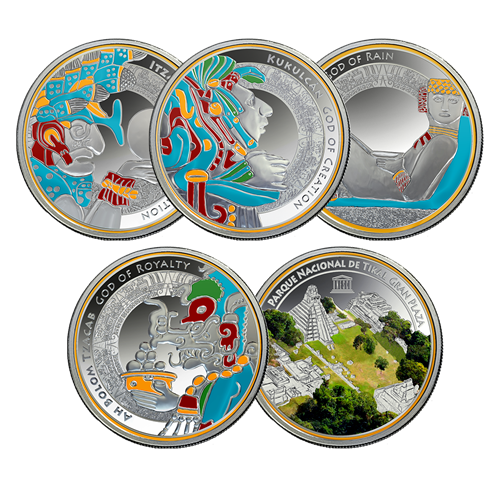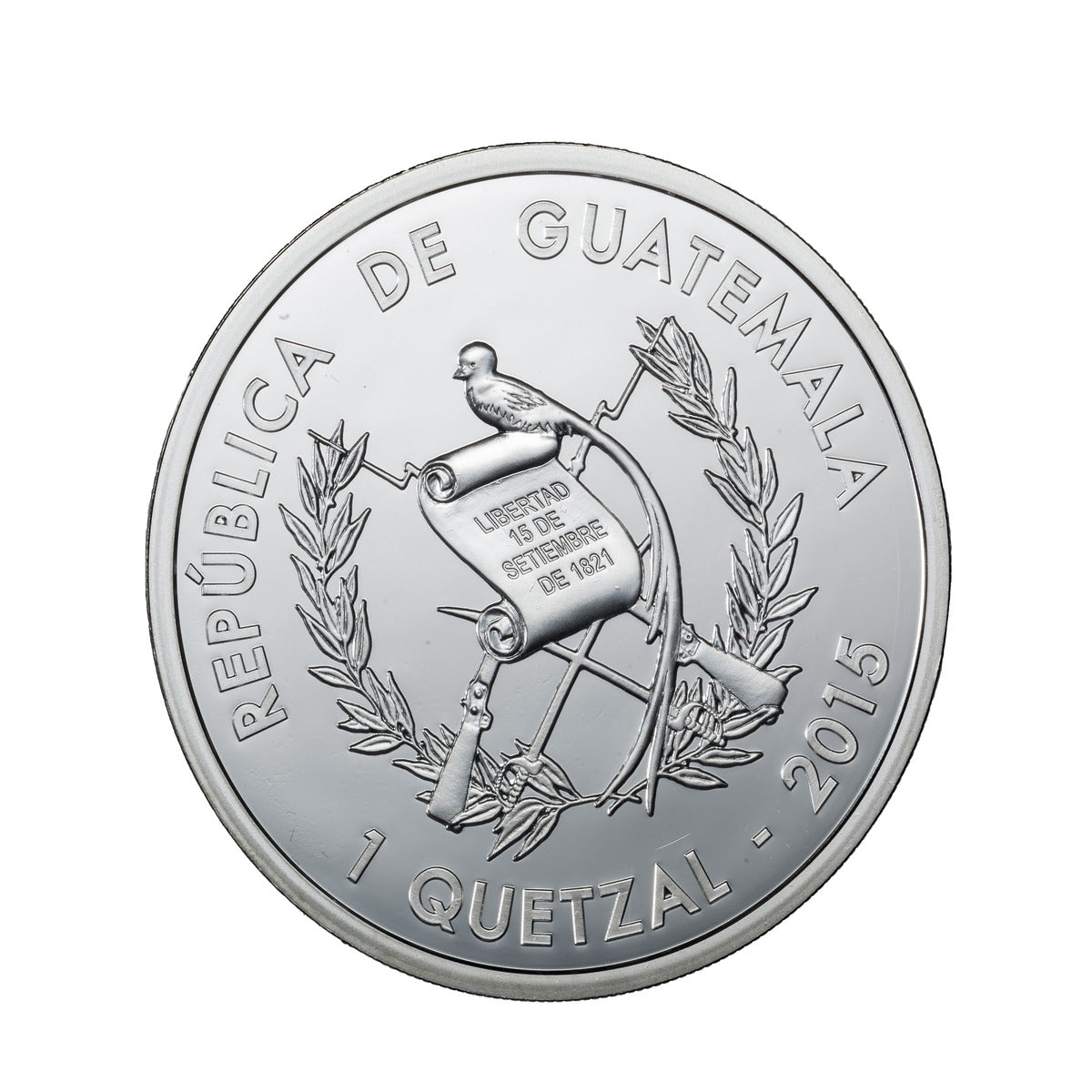Description
Rare for a boxed set, the Parque Nacional de Tikal-Gran Plazacenterpiece coin is also an official addition to the UNESCO World Heritage Coin and Medal Program, which is internationally managed and implemented exclusively by Produits Artistiques Metaux Precieux (PAMP).
One of PAMP's most unique coin sets to date, and the latest addition to its Mythologies of the World series, the Gods of the Maya collection is notable in several ways. The Maya worshipped countless gods and goddesses, many unique to local tribes, and with characteristics that over time merged with other ethnic deities via trade and conquest. For this outstanding collection, four deities with distinct attributes were selected due to widespread prominence throughout the diverse Maya city-states of Mesoamerica: Itzamná, god of divination and writing; Ah Bolom Tzacab, god of royalty and lineage; Chaac, god of rain, and Kukulcán, god of creation. Mintage is limited to 2,000.
The Design:
Beautifully executed as an aerial view, the reverse side of this spectacular World Heritage coin also bears the renowned UNESCO logo as a prestigious mark of authenticity, while the obverse side carries the official effigy of the Guatemalan government.
Each god is brought to life via a multifaceted interplay of high and low relief, highly polished and frosted finishes, and thoughtful applications of brilliant colour accurate to those of the ancient Maya, and made possible thanks to ‘Virtual Enamel,' a new colouring process nearly identical to the finest enamel work. The gods of the Maya were inexorably linked to nearly every aspect of daily life, intensely influencing this highly sophisticated civilization's approach to governance, astronomy, mathematics, language, and significantly, city planning and architecture. Thus, a fifth coin central to the theme represents Tikal, once a vast metropolis and former Maya capital located in the north of present-day Guatemala. Sprawling across an immense tropical rainforest and abundant with thousands of archaeological treasures, Parque Nacional de Tikal, as the area is now formally known, was declared a UNESCO World Heritage site in 1979.




